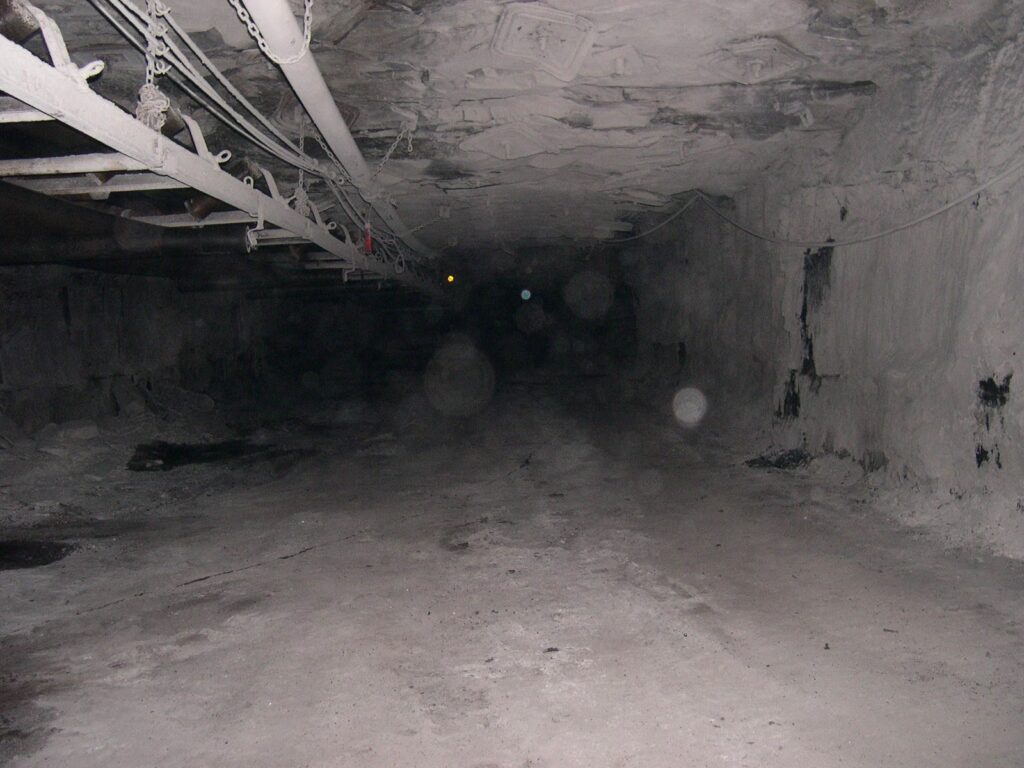We didn’t have rail at Alpha Natural Resources’ Paramont Deep Mine 26, even though it was Southwest Virginia’s second largest mine at the time. Entry in and out of the mine was down an 2,500 ft. slope to reach a vertical depth of roughly 400 feet and access to the Lower Banner Seam. I recalled the rumors when DM 26 first opened in the early 2000s. A lot of the older miners kept talking about how “hot” it was. In mining terms, “hot” means there’s a lot of methane gas thereby increasing the risk of a mine explosion. The rumors were true, and at one point the mine was liberating seven million cubic feet of methane every 24 hours, more when low pressure systems would pass through. None of it was recovered.
Despite the size of the mine, running five continuous miner sections at its peak and producing upwards of two million tons of clean coal per year (with reject running 40-60%), the company preferred to skip out on the costs of a decent rail system and the crews to maintain it. Instead they relied upon a fleet of A.L. Lee Model 255 rubber tired diesel personnel carriers, or mantrips and jeeps as we called them. For carrying in mine supplies they purchased rubber tired diesel “tractors” to pull trailers in and out of the mine and large diesel powered scoops. They even had an underground road grader (that didn’t do much during the summer when the roadways turned to mud).

To make matters worse, we had a split return system with belt air, meaning that some of our “fresh air” intake came up the travel ways, bringing every bit of that exhaust to the sections where we had to work.
It was a lot different than the trolley wire rail systems my dad used Beth Energy’s mining complexes. Men and supplies were taken in and out using nothing but electricity. No exhaust fumes to breath.
Of course, there are standards in place for diesel equipment used in underground coal mining. Maintenance men who work on diesel equipment must receive their “Diesel Certificate” from the state. One of their duties as certified diesel mechanics was to keep the equipment running as clean and efficient as possible to reduce diesel particulate matter in the enclosed air spaces of the mine. I knew the men who worked on all of our diesel equipment and they were stand up guys, but as is the case at many “for profit” businesses, they were over always worked—always overwhelmed. The majority of their time was spent keeping the fleet up and running. It also seemed to be company policy to repair equipment over and over rather than purchase new.
Many of our mantrips should have been gotten rid of long ago, especially at a mine that grossed more than $375 million a year when the European met coal market was up (1.7 million clean tons in 2008 with an avg met coal price of $250 per ton). I could go on and on about their equipment purchasing and the lack of time and resources they gave their maintenance folks to keep things safe, (18 hours of production and 6 hours of maintenance that often included belt up and power moves), but that’s a different story.
Ever day we’d all pile onto a mantrip, breathing in the exhaust as we headed down the travel ways of the mine. Sometimes the going was slow and we’d be keeping pace with the air heading up the travel way—and the exhaust. Even if we did outrun it, we all still breathe it once it caught up to us on the section. It was just more diluted.
On cold days it could be even worse. On occasion I found myself to be the unlucky one riding on the back end near the exhaust. By the time we got to the sections, my eyes and throat would be burning from the blue smoke-partially burned exhaust. Needless to say, it wasn’t good for us.
What was Alpha Natural Resources slogan again? “Running Right?”
A few years ago I wrote the article for The Appalachian Voice titled “A Coal Miner’s Health: Short Term Gains, Long Term Losses” and in it I mentioned a quote I got from the folks at the National Institute of Occupational Safety and Health (NIOSH) that’s part of the Center for Disease Control.
While the U.S. Mine Safety and Health Administration and state mining agencies have put various laws regarding diesel equipment in place, miners are left to wonder if it will be enough. “NIOSH cannot definitely determine that current diesel regulations will result in the elimination of all diesel health concerns,” stated Ed Blosser, Public Affairs Officer for NIOSH. “The reason for this uncertainty is that there is still incomplete information concerning the level of exposure to diesel emissions that may cause health effects.”
I can tell Mr. Blosser that the level of exposures are high, and even NIOSH has published that miners can be exposed to 100 times the amount of any other occupation involving diesel equipment.
The website also states there is a “possibility” that diesel particulate matter (DPM) is carcinogenic, i.e. cancer causing.
I keep wondering why we miners were so complicit with it. I guess we were just happy to have a high paying job. I’d say the ones who still have jobs after all the layoffs are even that much happier, and willing to overlook such problems.
In West Virginia, they’re even willing to vote in coal politicians who strip down diesel regulations and hand over the keys of maintaining them to a singular person rather than a committee of folks from both the industry and the unions representing miners safety.
I suppose black lung wasn’t bad enough by itself.

